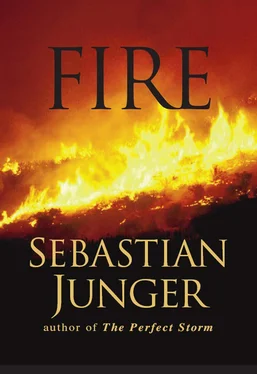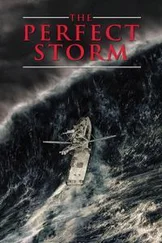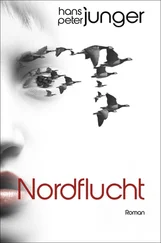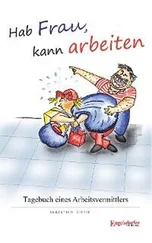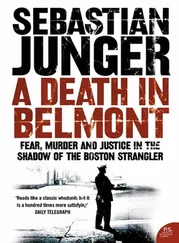Author’s Note
This essay was written in 1992, and since then there have been many changes in the way wildfire is fought in the United States. I wanted to alter the original work as little as possible, so it should be noted that—among other changes—the Boise Interagency Fire Center is now called the National Interagency Fire Center; fire fighters are paid more than $8.50 an hour; and portable computers are in common use for predicting fire behavior.
Most significant, however, the fatality statistics have changed. When I was in Idaho, it had been twenty-six years since more than half a crew had died in a single incident—the Loop fire in southern California, where twelve hotshots were overrun in a matter of minutes. Tragically, in 1994, fourteen hotshots and smoke jumpers were overrun in similar circumstances on the South Canyon fire outside Glenwood Springs, Colorado. The South Canyon fire is now the deadliest fire since 1937. My account of that incident appears as “Blowup,” the second essay in this collection.
Many hotshots I spoke with attributed the increasing danger of their job to severe drought conditions in the northern Rockies, as well as to decades of rigorous fire suppression. Both have contributed to a huge buildup of dead fuel in our nation’s forests—fuel that ordinarily would have been cleared out by the small fires that regularly flare up in an unmanaged ecosystem. A disastrous fire season was inevitable, and in 2000 it finally happened. Eighty-five thousand wildfires burned nearly seven million acres across the United States. Sixteen people died, and fire suppression cost over one billion dollars.
It was the worst season ever. With the western drought continuing unabated and huge amounts of deadwood still choking many forests, fire behavior experts don’t expect conditions to get better anytime soon.
BLOWUP: WHAT WENT WRONG AT STORM KING MOUNTAIN
1994
The main thing Brad Haugh remembers about his escape was the thunderous sound of his own heart. It was beating two hundred times a minute, and by the time he and the two smoke jumpers running with him had crested a steep ridge in Colorado, everyone behind them was dead.
Their coworkers on the slope at their backs had been overrun by flames that Haugh guessed were three hundred feet high. The fire raced a quarter mile up the mountain in about two minutes, hitting speeds of eighteen miles an hour. Tools dropped in its path were completely incinerated. Temperatures reached two thousand degrees—hot enough to melt gold or fire clay.
“The fire blew up behind a little ridge below me,” Haugh said later. “People were yelling into their radios, ‘Run! Run! Run!’ I was roughly one hundred and fifty feet from the top of the hill, and the fire got there in ten or twelve seconds. I made it over the top and just tumbled and rolled down the other side, and when I turned around, there was just this incredible wall of flame.”
Haugh was one of forty-nine firefighters caught in a wildfire that stunned the nation with its swiftness and its fury. Fourteen elite fire fighters perished on a spine of Storm King Mountain, seven miles west of Glenwood Springs, Colorado. They died on a steep, rocky slope in a fire initially so small that the crews had not taken it seriously. They died while cars passed within sight on the interstate below and people in the valley aimed their camcorders at the fire from garage roofs.
There were many other fire fighters on Storm King when Brad Haugh crested the ridge, yet he feared that he and the two men with him were the only ones on the mountain left alive. That thought—not the flames—caused him to panic. He ran blindly and nearly knocked himself unconscious against a tree. Fires were spotting all around him as the front of flames chased him. The roar was deafening; “a tornado on fire” was how he later described it. The light, he remembered, was a weird blood-red that fascinated him even as he ran.
The two smoke jumpers with him were Eric Hipke and Kevin Erickson. Hipke had been so badly burned the flesh was hanging off his hands in strips. Haugh paused briefly to collect himself, then led the two men about a hundred yards down the mountain, stopping only long enough to wrap Hipke’s hands in wet T-shirts. As they started down again, the fire was spreading behind them at a thousand acres an hour, oak, pinyon, and juniper spontaneously combusting in the heat.
“I didn’t have any nightmares about it later,” said Haugh. “But I did keep waking up in the night very disoriented. Once I had to ask my girlfriend who she was.”
The South Canyon fire, as it was called, ignited on Saturday, July 2, as a lightning strike in the steep hills outside Glenwood Springs. At first people paid it little mind because dry lightning had already triggered thirty or forty fires across the drought-plagued state that day; another wisp of smoke was no big deal. But this blaze continued to grow, prompting the Bureau of Land Management (BLM) district office in Grand Junction to dispatch a seven-member crew on the morning of July 5 to prepare a helicopter landing site, designated H-1, and start cutting a fire line along a ridge of Storm King. At this point the blaze was cooking slowly through the sparse pinyon and juniper covering the steep drainage below. Glenwood Springs was visible to the east, and a pricey development called Canyon Creek Estates was a mile to the west. Interstate 70 followed the Colorado River one thousand feet below, and occasionally the fire fighters could see rafters in brightly colored life jackets bumping through the rapids.
The BLM crew worked all day, until chain saw problems forced them to hike down to make repairs. Replacing them were eight smoke jumpers from Idaho and Montana (eight more would be added the next morning) who parachuted onto the ridgetop to continue cutting fire line. They worked until midnight and then claimed a few hours’ sleep on the rocky ground.
Just before dawn, on the morning of July 6, Incident Commander Butch Blanco led the BLM crew back up the steep slope. Arriving at the top, Blanco discussed strategy with the smoke jumper in charge, Don Mackey. At about the same time, the BLM office in Grand Junction dispatched one additional crew to the fire, the twenty-member Prineville Hotshots, a crack interagency unit from Oregon whose helmet emblem is a coyote dancing over orange flame.
The smoke jumpers had cleared another landing spot, H-2, on the main ridge, and around twelve-thirty in the afternoon, a transport helicopter settled onto it. The first contingent of the Prineville crew ran through the rotor wash and crouched behind rocks as the chopper lifted off to pick up the rest of the unit from below. They’d been chosen alphabetically for the first flight in: Beck, Bickett, Blecha, Brinkley, Dunbar, Hagen, Holtby, Johnson, and Kelso. Rather than wait for their crew mates, these nine hotshots started downslope into the burning valley.
The layout of Storm King Mountain is roughly north-south, with a central spine running from the 8,793-foot summit to H-2. Another half mile south along this ridge was the larger site, H-1. The fire had started on a steep slope below these cleared safe areas and was spreading slowly.
The strategy was to cut a wide firebreak along the ridgetop and a smaller line down the slope to contain the blaze on the southwestern flank of the ridge. Flare-ups would be attacked with retardant drops from choppers. If there were problems, crews could easily reach H-1 in five or ten minutes and crawl under their fire shelters—light foil sheets that resemble space blankets and deflect heat of up to six hundred degrees.
“It was just an ugly little creeper,” the BLM’s Brad Haugh said of the early stages of the fire. Every summer, fire fighters like Haugh put out thousands of blazes like this one all over Colorado; at this point there was no reason to think South Canyon would be any different.
Читать дальше
